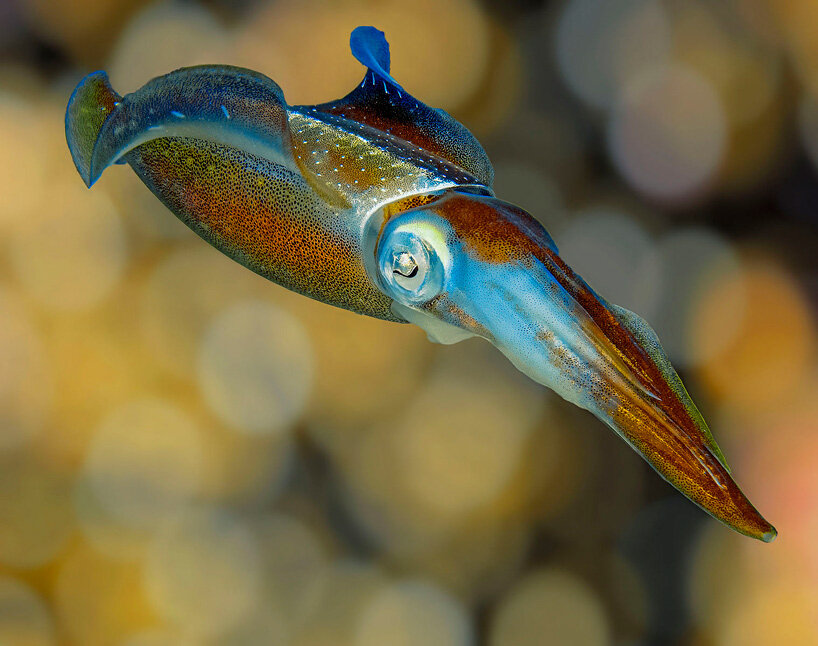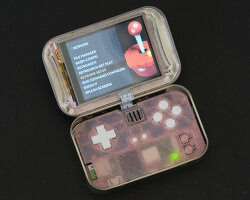engineers at rutgers university have drawn from the color-changing skin of cuttlefish, octopuses and squids to develop a 3D-printed hydrogel, or smart gel, that changes shape when exposed to light. the artificial chromatophore is modeled after the amazing ability of cephalopods to change the color and texture of their soft skin for functions such as camouflage and communication. the ‘artificial muscle’ may lead to new military camouflage, soft robotics and flexible displays. caribbean reef squid image by betty wills (atsme), wikimedia commons, license CC-BY-SA 4
caribbean reef squid image by betty wills (atsme), wikimedia commons, license CC-BY-SA 4
the rutgers engineers also developed a 3D-printed stretchy material that can reveal colors when light changes, according to their study in the journal ACS applied materials & interfaces. combined with the light-sensing smart gel, the 3D-printed material changes color, resulting in a camouflage effect. the invention is modeled after the ability of cephalopods such as cuttlefish, octopuses and squids to change the color and texture of their skin. this is achieved by the thousands of color-changing cells, called chromatophores, in their skin.
‘electronic displays are everywhere and despite remarkable advances, such as becoming thinner, larger and brighter, they’re based on rigid materials, limiting the shapes they can take and how they interface with 3D surfaces,’ says senior author howon lee, an assistant professor in the department of mechanical and aerospace engineering in the school of engineering at rutgers university–new brunswick. ‘our research supports a new engineering approach featuring camouflage that can be added to soft materials and create flexible, colorful displays.’
 photo by francis nie on unsplash
photo by francis nie on unsplash
to develop the 3D-printable smart gel, the engineers incorporated a light-sensing nanomaterial in the hydrogel, turning it into an ‘artificial muscle’ that contracts in response to changes in light. next steps include improving the technology’s sensitivity, response time, scalability, packaging and durability. in the video below, you can learn more about how and why squids change the color of their skin.
video by deep look / KQED science
 caribbean reef squid image by betty wills (atsme), wikimedia commons, license CC-BY-SA 4
caribbean reef squid image by betty wills (atsme), wikimedia commons, license CC-BY-SA 4

this octopus has color-changing cells, called chromatophores, in its skin, a phenomenon that inspired rutgers engineers
image: NOAA okeanos explorer program, galapagos rift expedition 2011














